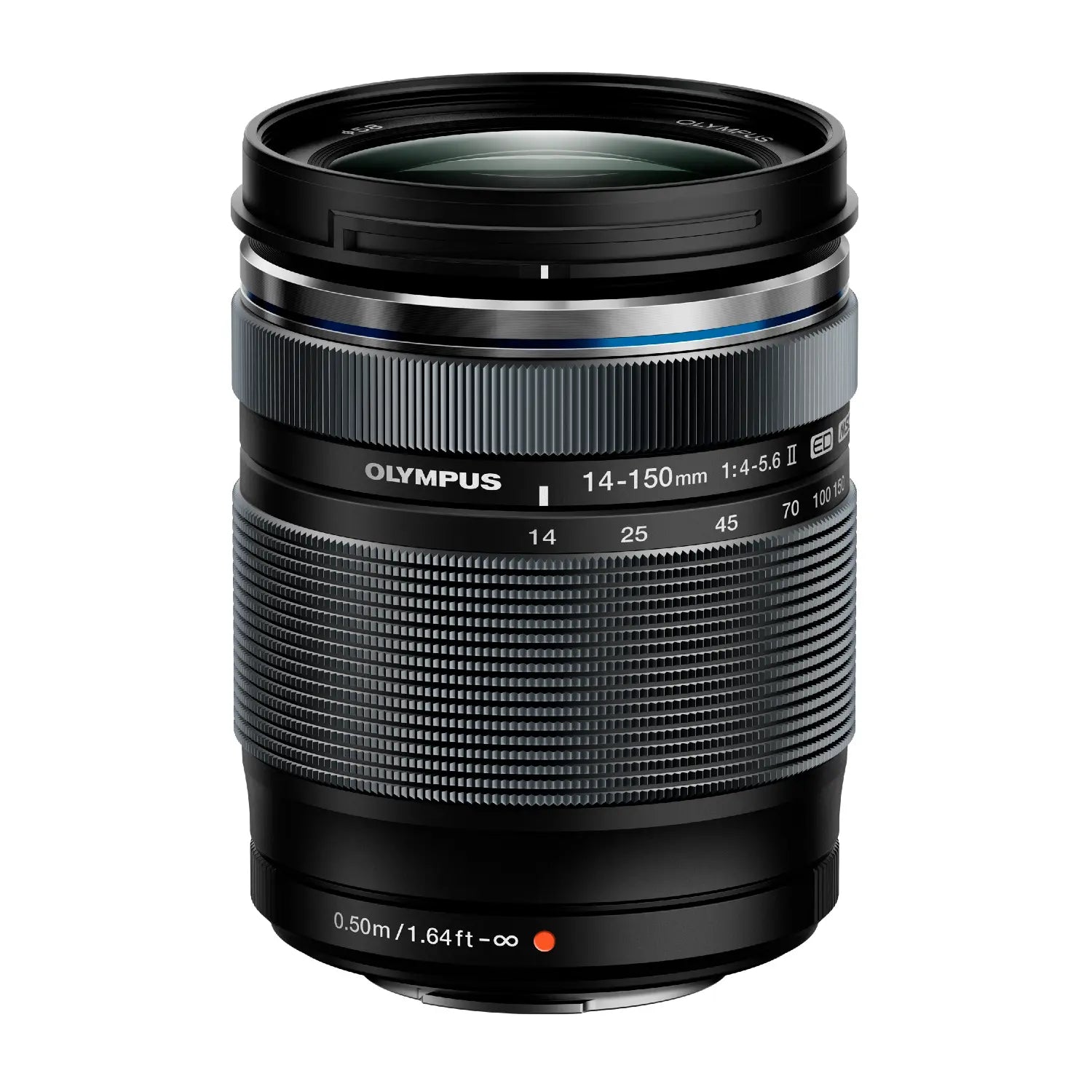OM SYSTEM Winter Cashback Promotion 2025

Discover the perfect opportunity to upgrade your photography gear with exclusive cashback offers across a wide range of OM SYSTEM cameras and lenses. Whether you’re stepping into the OM SYSTEM ecosystem for the first time or expanding your current setup, this limited-time promotion makes it easier than ever to invest in premium quality and performance.
Enjoy peace of mind with a 5-Year Total Warranty on all featured products — ensuring lasting protection and confidence in every shot. From lightweight mirrorless cameras to professional-grade lenses, the comprehensive OM SYSTEM lineup has something for every creator, adventurer, and storyteller.
Claim your cashback, enjoy extended warranty coverage, and capture more with OM SYSTEM.
Product Description
OM System / Olympus 14-150mm F4.0-5.6 II Zoom Lens
The Ultimate All-in-One Zoom Lens for Any Occasion
The OM System / Olympus M.Zuiko Digital ED 14-150mm F4.0-5.6 II lens is a high-powered, all-in-one zoom lens designed for photographers who want versatility without sacrificing quality. Covering an impressive 28-300mm equivalent focal length (35mm format), this lens allows you to capture everything from wide-angle landscapes to detailed telephoto shots, making it perfect for travel, nature, portrait, and everyday photography.

Key Features:
- Extensive Zoom Range: Covers 14-150mm (28-300mm equivalent) focal length.
- Compact & Lightweight: Eliminates the need for multiple lenses, weighing just 285g.
- Weather-Sealed Construction: Splashproof, dustproof, and freezeproof for all-weather reliability.
- ZERO Coating: Reduces reflections and ghosting for clearer images.
- Fast & Quiet Autofocus: MSC (Movie & Still Compatible) technology for smooth video and still shooting.
- High-Speed Imager AF: Ensures quick and precise focusing.
- Close Focus Distance: 0.5m across the zoom range for impressive close-up shots.

Compact & Lightweight: One Lens for Every Shot
Designed for maximum versatility, the Olympus 14-150mm F4.0-5.6 II allows you to travel light while covering a vast range of focal lengths. Whether you’re capturing sweeping landscapes at 14mm or zooming in on distant subjects at 150mm, this lens eliminates the need to constantly switch lenses, so you never miss the perfect moment.
Its compact 285g design makes it the ideal travel companion, ensuring you can carry a powerful zoom range in a small, lightweight package.

Exceptional Optical Performance & ZERO Coating
Olympus’ advanced ZERO (Zuiko Extra-low Reflection Optical) Coating enhances image quality by minimizing lens flare and ghosting, particularly in backlit conditions. The optical design effectively suppresses chromatic aberrations, ensuring sharpness and clarity across the entire zoom range.
Whether you’re shooting wide-angle landscapes or distant telephoto subjects, this lens delivers high-contrast, high-resolution images with vibrant colours.

Fast, Silent Autofocus with MSC Technology
The Movie & Still Compatible (MSC) autofocus system ensures ultra-fast, near-silent focusing, making this lens ideal for both photography and video recording. The high-speed Imager AF system delivers accurate and quick focusing even when tracking fast-moving subjects.
This feature makes the lens perfect for:
- Capturing wildlife and action shots.
- Shooting high-quality video with smooth focus transitions.
- Street and candid photography, where silent operation is essential.

Close-Up Shooting Performance
With a minimum focusing distance of just 0.5m (50cm) across the zoom range, this lens allows for stunning close-up shots, rivaling dedicated macro lenses. Whether capturing detailed textures, flowers, or food photography, the maximum magnification of 0.22x (35mm equivalent) provides exceptional close-up performance.

Built to Handle Any Environment
The M.Zuiko Digital ED 14-150mm F4.0-5.6 II is designed for uncompromising durability. Its weather-sealed construction ensures reliability in harsh shooting conditions:
- Dustproof & Splashproof (IPX1-rated) for shooting in rain, dust, and humidity.
- Freezeproof to -10°C, making it perfect for cold-weather photography.
Pair this lens with Olympus OM-D weather-sealed cameras for a rugged setup that can handle extreme conditions.

Ideal for Travel & Everyday Photography
This all-in-one zoom lens is perfect for photographers who need versatility without carrying multiple lenses. It excels in various scenarios, including:
- Travel & Adventure Photography – Covers everything from wide-angle to telephoto with a single lens.
- Landscape & Nature Photography – Capture vast sceneries or zoom in on distant subjects.
- Portrait & Street Photography – Beautiful bokeh and fast autofocus for dynamic shots.
- Videography – Silent, smooth AF ensures seamless video recording.

Conclusion: The Best All-Rounder for Your Camera Kit
The Olympus M.Zuiko Digital ED 14-150mm F4.0-5.6 II is a must-have lens for photographers seeking an all-in-one solution with professional-grade performance. Whether you’re a traveller, an outdoor enthusiast, or a content creator, this lens delivers the perfect balance of portability, durability, and optical excellence.
Upgrade your photography experience with the Olympus 14-150mm F4.0-5.6 II and capture stunning images from wide to telephoto – all with a single lens!
Payment & Security
Your payment information is processed securely. We do not store credit card details nor have access to your credit card information.




















